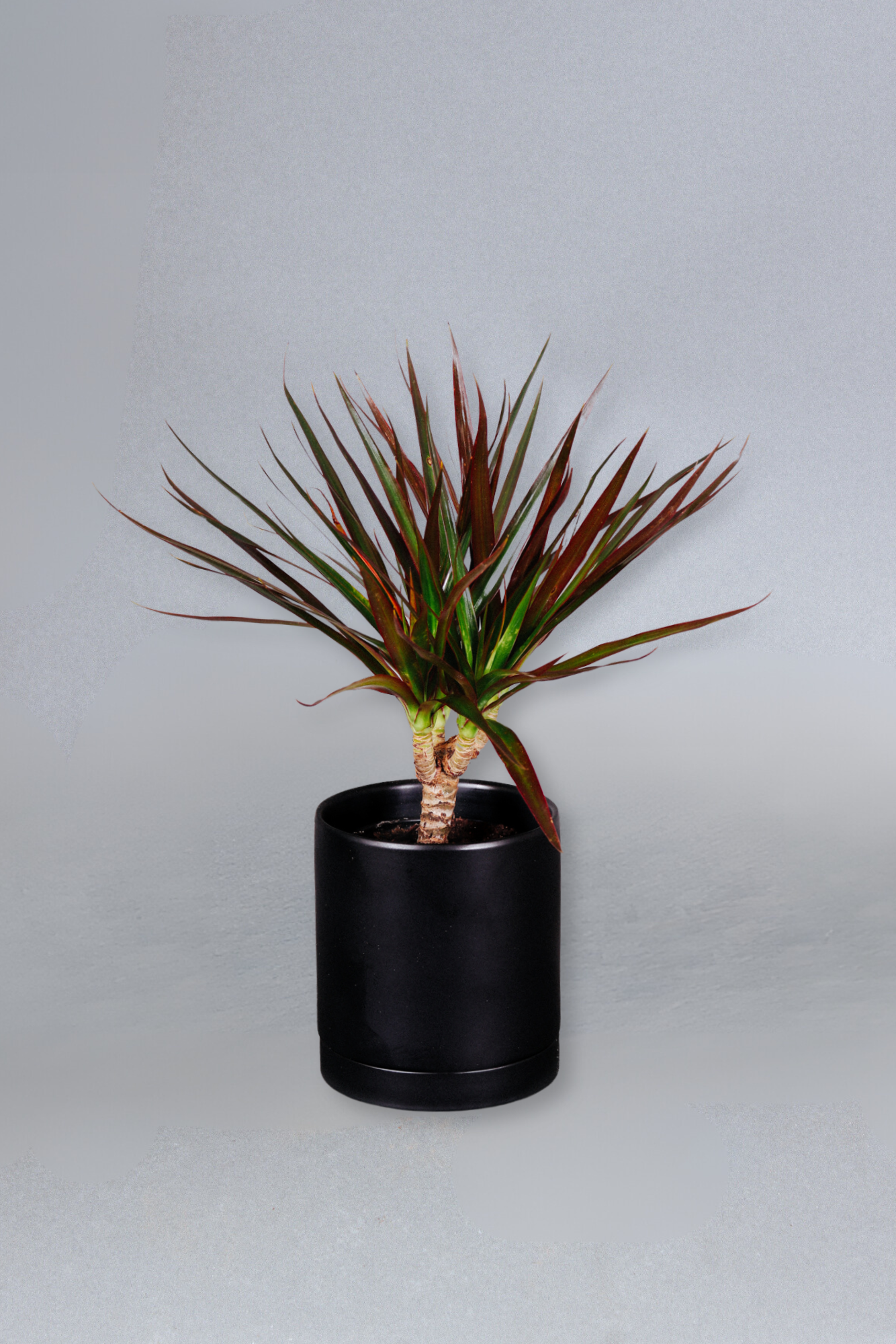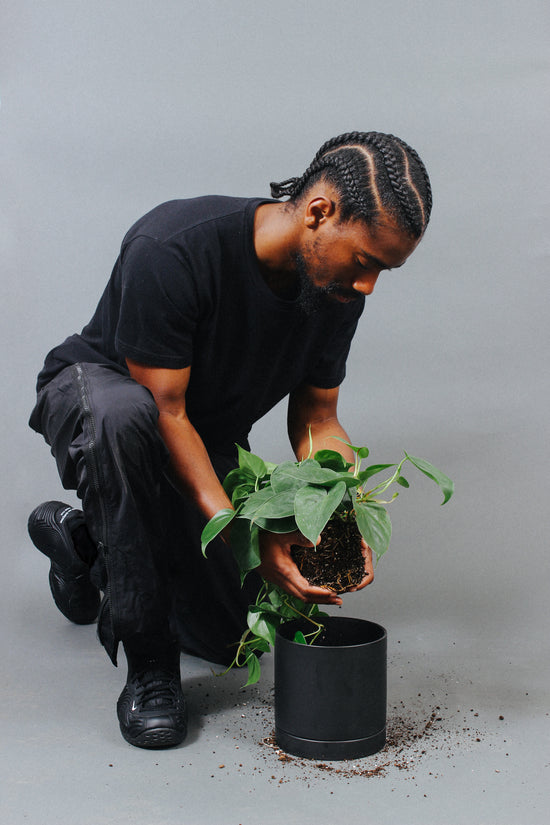If you're watching your plant deteriorate before your eyes and you've run out of ideas to help it, allow us!. Take a moment to set your panic aside and review our go-to tips if your plant is nearing the "last resort" stage.
First and foremost, if you're worried that your plant may not last much longer, please take advantage of Grounded's free Office Hours service, which provides direct support from our Plant Specialist. We're committed to nurturing your green thumb so your houseplants can thrive.
Tip #1 - Assess the Plant's Livelihood Through Leaves and Roots
When confirming how much life is left in the plant, you'll want to focus on two things: the leaf appearance and the condition of the roots. Leaves offer great insight into the plant's health by displaying signs of fungus, pests, or unmet needs. Roots are vital to a plant's life and thus, if they are in bad shape, the plant will not survive much longer. Depending on the condition of each, there are next steps you can take to save the plant!
What to look for:
Mushy, dark, or foul-smelling roots are signs of root rot and fungus, which can be fatal to the plant. Remove unhealthy roots with your hands or using clean scissors and repot the plant. If most of the root system looks this way, you'll want to propagate healthy stems and leaves in order to save the plant.
Bare stems or fallen leaves are often a sign of unmet needs, though some plants can bounce back from leaf loss with patience and exceptional care. If the root system is healthy, the plant will continue to push out new growth. Issues such as lighting or imbalanced watering should be corrected ASAP. Leaf loss is also common after a change shocks the plant.
Tip #2 - Save Your Dying Plant Through Propagation
If you feel that your plant is beyond recovery or if you need some time to better understand how to care for it, we recommend propagating healthy pieces of your plant. Propagation is an easy method that allows new roots to grow from stems or leaves that have been cut away.
While not every plant can be propagated by stem or leaf cuttings, it's one of the easiest ways to save your greenery and start anew. Some succulents and cacti can grow a new plant simply by placing a healthy leaf in moist soil, encouraging new roots to sprout. Many other propagations can do the same when placed in a glass of clean water for a few weeks.
Popular plants such as the Pothos, Monstera, Maranta, ZZ, and Snake Plants can be propagated in water using stem or leaf cuttings. Learn more about this process by reading through our Propagation Guide. Some plants can only be propagated by dividing the plants at the roots. In these cases, you'll want to revisit tip #1 above to ensure the roots and greenery are in good enough health to survive.
Tip #3 - Cut Away Damaged and Dead Growth
When your plant shows signs of deterioration, infestation, or disease, it's best to trim these parts of the plant away. Doing so allows the plant to direct its energy to healthy growth and prevents any possible infection from spreading. Similarly, if your plant has pests, remove them so it can utilize all of its nutrients.
Some plants also benefit from this strategic pruning by pushing out new growth at the site of the cut. From big plants like Fiddle Leaf Figs to smaller plants like the Pothos, stems will be encouraged to branch out in new directions after being cut. Be sure to provide your stressed plant with the best care to help it through!
Tip #4 - Fertilize for Extra Vigor
Fertilizer helps plants resist disease, build strong cells, and look their best. When your plant is struggling, it's a great idea to offer them a fertilizer treatment. Note that fertilizer is best used monthly during spring and summer. Feeding your houseplants during fall and winter can actually do more harm than good.
Feed the soil a dose of diluted fertilizer or make something from home, like Rice Water. Worm castings are also a great addition to work into the soil for root health. Always follow fertilizer with water and give your plant the best care possible, including making their environment feel like home. If you're caring for a tropical plant, comfortable temperatures and high humidity are crucial for its recovery.
Tip #5 - Be Patient, Healing Doesn't Happen Overnight
Plants are living organisms that need time to recover from periods of stress and poor health. Stay consistent for a few weeks while your plant stabilizes. From there, it may even take months before you see new growth. Your efforts and patience will reward you with a resilient plant or a valuable lesson in your green thumb journey.
Don't forget that we are here to support you and your greenery! On top of our complimentary Office Hour consultations, we also have Care Guides and other tips on our Resource Page and Instagram.
If you are struggling with your Grounded plant, please reach out to us directly at customerservice@feelgrounded.com so we can help.








